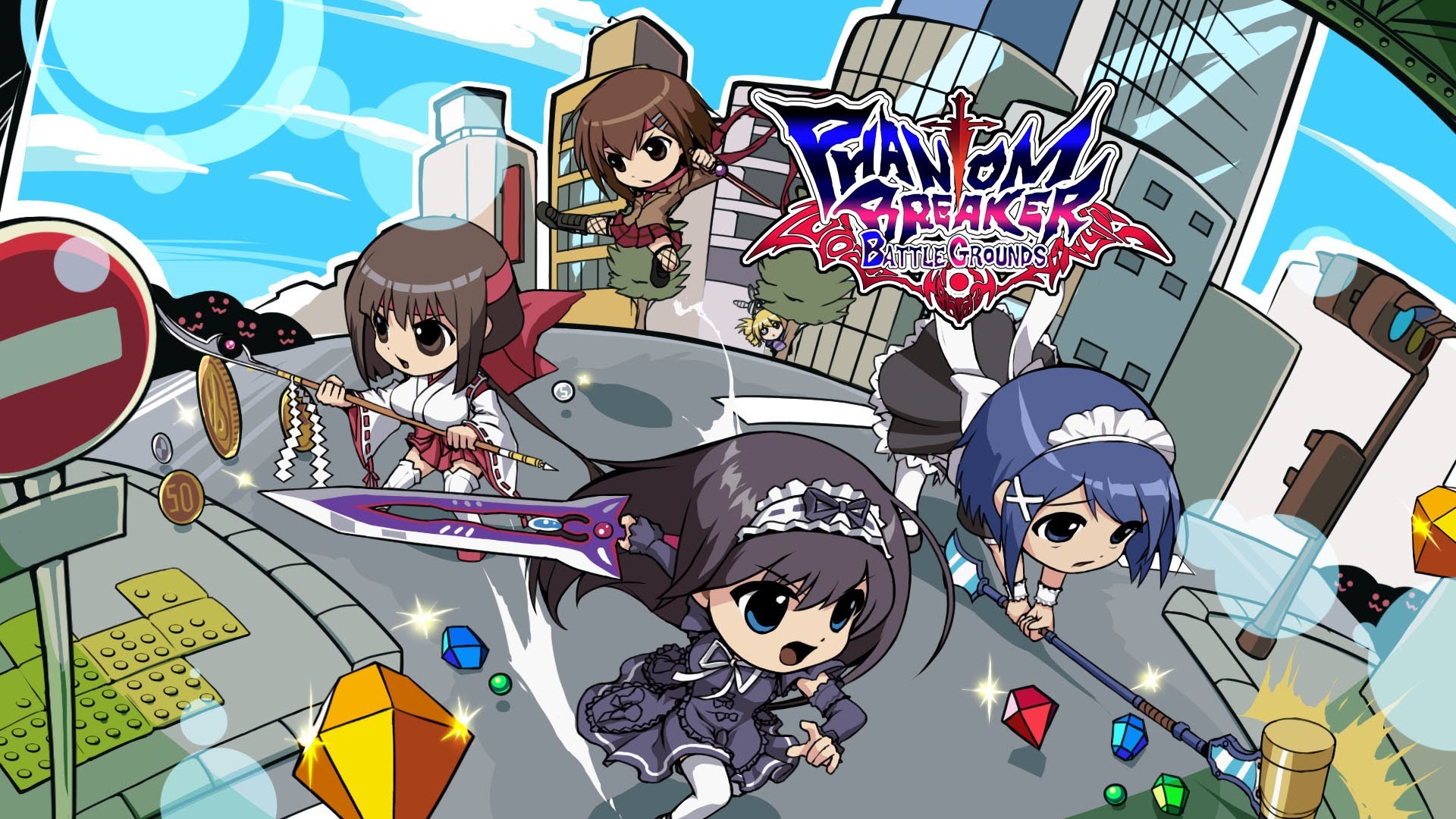Written for XPGain, recreated with permission.
Played on PS Vita
There is a certain charm that seems to come with nostalgia. A specter of memories that seems to linger in the hazy edges of the mind, carrying with it the pleasant emotions, longings, and desires of a different time. These memories and art styles don’t really mean anything in and of themselves, they’re simply an aesthetic. How the game chooses to evoke and apply these features can say a lot about it. Even dated, arcade-style brawlers will often prey on nostalgia to make the game visually and mechanically interesting.
In the case of Phantom Breaker: Battle Grounds, the design choices are a testament to retro graphics and gameplay and an honest showing of how they can be done very well. Part of this is because Battle Grounds is a very polished experience. The sprites are well animated, the effects are visually pleasing, and everything is straightforward and enjoyable. In short, the game is a solid example of doing many things right.
Admittedly, the aesthetic isn’t for everyone. The storyline is culturally abstract for most countries. The character motivations, and plot events, don’t always seem to gel comfortably with the way people are likely to behave. It will comfortably fit more eastern story tropes, and character motivations are sensible to the more culturally aware, but very uncommon to most western audiences. Further still, the translation to the written dialog seems very direct. While this means it’s perfectly legible in English, the personalities and expressions don’t clear the culture divide, and can make the whole assemblage feel alien and abstract.
Design-wise, everything is chibified, cutesy, and very culturally Japanese. The enemies are caricatures of stereotypes that don’t exist in western countries, the starting characters are Japanese girls, and the stages are all very much from Japan. Further, later stages have derivatives of earlier foes. Palette swaps, color changes, and little cosmetic differences are common throughout, and players won’t often encounter new enemies until the latter half of the game.
Because of that, familiarity can be a problem. Before the enemies start to feel like they repeat too often, the brawler aspect of the game will seem repetitive. Enemies, stages, and combat will feel that way early on. There is a leveling system to buy upgrades to the player’s skill tree, unlocking new avenues of attack. Until the character levels up enough to start unlocking new moves, the simplest form of the system gets repetitive. Brawlers are at their core very repetitive games, but Battle Grounds goes beyond that, making the early stages feel stiff and wooden.

Four different player characters are available from the start, with six unlocking after beating the game on different difficulties. These characters all have similar inputs: light, medium, heavy attacks, and a special attack button. Their combos vary a little in range and speed, but ultimately result in the same kind of play with little variations. The variety is such that they’ll each feel different in practice, but similar enough to be familiar when swapping.
Once players really sink under the surface, though, a lot more of the game’s nuance will start to materialize. Because Battle Grounds is built on the back of the first Phantom Breaker, a fighting game that never made it out of Japan, the engine’s deeper aspects and skill tree upgrades hide a surprising depth. Move upgrades and extended combos unveil new strategies for juggling enemies, prolonging combos, and interrupting enemies. The defensive maneuvers enable a wide range of responses to attacks, and offers multiple strategies for players wanting to vary up their play styles. When swapping between character types and upgrade trees, the depth of play really shines in how much variety can be packed onto what is, at first, a very simple system.
However, that depth of play comes at a cost. Players unfamiliar with fighting games or optimised stat trees will find the boss battles can become unrelenting at higher difficulties. Players who fail to upgrade their stats or skills wisely will find the bosses sudden fierce attacks and hard-hitting combos to be an uncaring wall of death attached to the end of every stage. Granted, simply piling experience points into defense and attack stats can make even the most straightforward combos hefty, but it comes at the cost of making the game grindy to level up enough.
Further, the nuances aren’t really explained in detail. There is a help menu that explains a majority of the games advanced aspects in text form, but doesn’t show the player how to do it or explain why to do it. So players have to take a personal interest to understand where the stat points being allocated are really going. Even if the player maximizes their knowledge and experiments with the game system, the engine can still be fickle.
Too many effects or elements on screen, combined with the dropped items from enemies, will start to slow the system down. Slowdowns at critical moments during combos can cause issues during critical moments, turning a near-victory into a sudden loss.

These can be mitigated with cooperative play, turning an already busy game into a delightful and frantic smorgasbord of player attacks. Tragically, the online lobbies are a ghost town. Unless the players coordinate their times, or play locally through AdHoc, the chances of multiplayer are practically zero.
Despite those errors, and a little bit of subjectivity with the character and setting design, Phantom Breaker: Battle Grounds is a solid example of a game that pushes all the right nostalgia buttons for the right reasons. It’s a solid brawler that harkens to an older, simpler time without skimping on the bells and whistles. It’s not a game for everyone, but definitely worth your interest if you enjoy brawlers, fighters, or even just a good game to play in short bursts.

Thoughts?